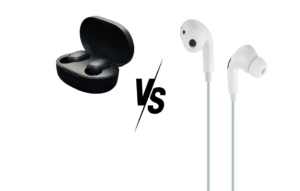In high-performance sports, we often talk about endurance, recovery, and injury prevention. But few athletes are aware of a silent factor that may be impacting performance at the cellular level: wireless radiation exposure from phones and other devices. A new peer-reviewed study has revealed that red blood cells may start clumping together—a phenomenon known as rouleaux formation—after just five minutes of close-range exposure to a smartphone.
While athletes tend to prioritize clean eating, smart training, and quality recovery, it’s time we consider how something as simple as where we keep our phone during practice or travel might affect blood flow, oxygen delivery, and systemic performance factors.
What Is Rouleaux Formation?
Rouleaux formation is a little-known but highly significant blood phenomenon that can have broad implications for athletes. It refers to the stacking or clumping of red blood cells into cylindrical formations, similar to a roll of coins. This has the potential to directly impact oxygen delivery, blood viscosity, and recovery outcomes.
Red Blood Cells and Athletic Efficiency
Under optimal conditions, red blood cells (RBCs) carry oxygen efficiently through the bloodstream, powered by a negative surface charge that helps them repel one another. This spacing keeps blood fluid and responsive, which is crucial for athletic performance and recovery. Proper RBC flow is essential not only for delivering oxygen and nutrients to working muscles but also for removing metabolic waste like carbon dioxide and lactic acid.
Rouleaux formation occurs when this charge weakens, causing RBCs to clump together. While this is sometimes seen in inflammatory conditions, infections, or after extreme physical exertion, the new concern is that exposure to EMF from mobile phones may trigger this effect even in healthy individuals during resting conditions.
This makes it a concern not just for general health, but specifically for athletes who rely on peak blood efficiency for training, competition, and recovery.
The Study: Live Imaging of Blood Changes
This recent study provides groundbreaking insight by documenting rouleaux formation dynamically in a living subject using real-time diagnostic ultrasound, rather than relying on lab slides or static blood samples.
From Baseline to Clumping in Five Minutes

A study published in Frontiers in Cardiovascular Medicine used real-time ultrasound imaging to examine the popliteal vein (located behind the knee) of a healthy 62-year-old woman. The researchers assessed her blood flow before and after five minutes of direct exposure to an idle iPhone placed against her skin.
Before exposure: Blood flow appeared smooth, uniform, and unobstructed, with an anechoic (dark) lumen indicating optimal circulation.
After five minutes of exposure: Red blood cells were visibly clumped, showing sluggish movement within the vein and signs of rouleaux formation.
After light exercise: The subject walked for five minutes to see if the effect would resolve. While clumping diminished somewhat, the rouleaux formation was still clearly visible in post-exercise ultrasound imaging.
The test was repeated two more times over the following months, using updated phone models and varied postures. Each time, rouleaux formation occurred, confirming the reliability and repeatability of the effect.
Systemic Effects, Not Just Localized
While the original assumption was that the clumping might be localized to the area directly exposed to EMF radiation, the third trial produced even more concerning results. Rouleaux formation was observed in both the exposed and unexposed legs. This strongly suggests a systemic physiological response to EMF exposure rather than a confined, localized reaction.
This has critical implications for athletes, especially those relying on symmetrical performance, bilateral circulation, or managing vascular health in both extremities. The possibility that a single EMF source can trigger whole-body blood changes raises concern for endurance athletes, fighters, motocross racers, and others whose sports demand sustained, whole-body blood perfusion.
Why Athletes Should Care
We often track blood lactate levels, hemoglobin counts, VO2 max, and heart rate variability as part of performance monitoring. But blood flow quality is just as important—and rouleaux formation disrupts it at the most fundamental level.
Performance, Recovery, and Oxygen Flow
Here are several reasons why athletes, coaches, and trainers should pay attention to rouleaux formation:
Reduced oxygen delivery: Clumped RBCs have a lower surface area for gas exchange and travel more slowly through capillaries.
Impaired removal of metabolic waste: Thicker blood makes it harder to flush out lactic acid, carbon dioxide, and inflammatory markers.
Delayed muscle recovery: Tissues may stay inflamed or hypoxic for longer, slowing down healing between training sessions.
Higher cardiovascular strain: The heart must work harder to pump thicker, more viscous blood, increasing overall load.
Greater risk of clotting: Especially for athletes with injuries, surgeries, or long travel sessions (e.g., flights to competitions).
For sports that require a finely tuned circulatory system—such as grappling, distance running, motocross, soccer, MMA, or cycling—these disruptions could translate into measurable declines in stamina, output, and mental clarity.
What Causes Rouleaux from EMF?
The clumping effect described in the study was not caused by inflammation, infection, or dehydration. So what exactly is disrupting the red blood cell spacing?
The Role of Polarized Radiation
Manmade electromagnetic fields—such as those emitted by smartphones, Bluetooth devices, Wi-Fi routers, and smartwatches—are uniquely polarized, meaning the EM waves oscillate in a uniform direction. This polarization is a key difference between artificial EMFs and natural ones (like the Earth’s magnetic field).
This uniform radiation can create a ripple effect on the zeta potential, the surface charge that normally keeps RBCs apart. When this potential drops below a certain threshold, the red blood cells begin to stick together.
Previous studies using dark-field microscopy had observed similar effects, but critics questioned whether the in vitro sample preparation affected the outcome. What makes this new study groundbreaking is that it observed rouleaux formation in vivo, with ultrasound imaging showing real-time blood changes in a living human.
For athletes, the takeaway is clear: even passive EMF exposure may compromise blood flow—a foundational component of performance.
The Bigger Picture: Cumulative Exposure
Athletes are often early adopters of wearable tech, heart monitors, smartwatches, and wireless recovery tools. These tools have their benefits, but they also increase EMF exposure—often for hours at a time, sometimes during sleep.
Phones, Routers, Headphones, and Wearables
Here are some common EMF sources in the daily life of an athlete:
Smartphones in compression shorts or sports bras
Wireless earbuds or Bluetooth headsets during workouts
Smartwatches worn 24/7 to track recovery and HRV
Wireless routers near home gyms or hotel rooms
5G exposure in stadiums and travel hubs
While each source may fall within regulatory guidelines, the total exposure over time can compound—especially during recovery windows when the body is supposed to be repairing itself.
Add to that the travel schedules, electrolyte fluctuations, and elevated oxidative stress from intense training, and EMF becomes a risk factor that’s simply too big to ignore.
How Athletes Can Protect Themselves
You don’t need to abandon your gear or give up your data tracking. But small strategic changes can go a long way toward minimizing EMF exposure without sacrificing performance benefits.
Simple, Effective Strategies
Avoid body contact: Don’t store your phone directly against your body, especially during training or recovery.
Use speakerphone or wired earbuds: Bluetooth devices emit constant EMFs, even when idle.
Enable airplane mode during sleep or downtime: This stops unnecessary data transfers and app syncs.
Don’t charge your phone next to your bed: EMF exposure at night can affect sleep quality and cellular recovery.
Take wearables off at night: Unless you need nighttime HRV data, give your body a break from wireless signals.
Aires: EMF Protection for Serious Performers

One of the most trusted solutions used by elite athletes, health practitioners, and high performers worldwide is Aires. Their devices don’t block signals but instead restructure radiation into less biologically disruptive patterns using fractal-based designs.
Why Aires?
Patented fractal resonance technology helps harmonize EMF exposure rather than blocking it
Supported by independent and peer-reviewed research, not just internal claims
Portable, lightweight, and versatile: options for phones, wearables, laptops, routers, and personal use
Used by UFC fighters, Olympic athletes, and high-level coaches to support recovery and focus
If you train hard, travel often, or use smart tech daily, Aires provides a high-performance solution to support your biology in the digital age.
Final Thoughts: Blood Flow Is a Performance Metric
Every athlete wants better blood flow. We foam roll, we breathe deeply, we take ice baths—all in the name of circulation. But what if our phones and wearables are undermining that work?
This new study highlights a tangible biological effect of EMF exposure that athletes can no longer afford to ignore. Rouleaux formation is real, visible, and may be happening more often than we think.
You train for the small edges: better grip, tighter timing, stronger breath control. Consider this a new edge to explore. Because if your blood’s not flowing right, nothing else really matters.
Let’s elevate performance by tuning in to the invisible variables—starting with the tech in our pockets.













